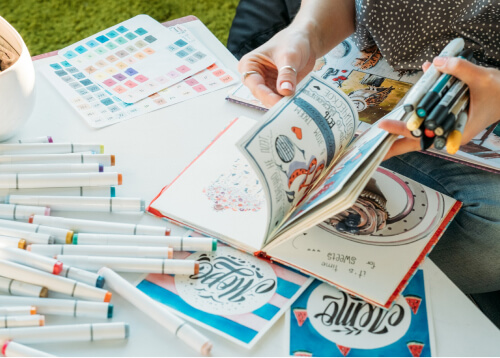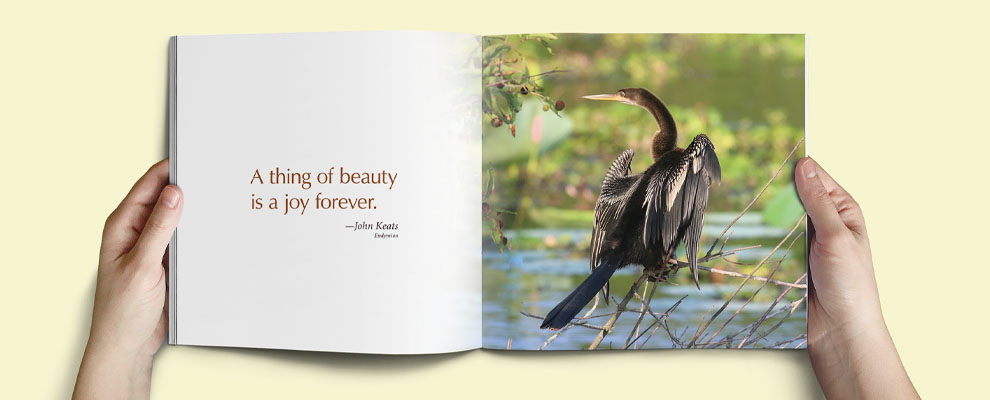Your Guide to Budgeting a High-End art book Production
Navigating the World of Art Book Printing: Tips and Techniques for a Remarkable End Up
When it concerns art book printing, you need to mix creative thinking with technological expertise for the finest outcomes. You'll encounter options that can make or damage your job, from selecting the appropriate printing method to selecting paper that improves your artwork. Prior to you complete anything, there's a crucial action that can conserve you from costly blunders. Let's discover what that is and just how it can boost your art book.
Understanding the Printing Process
When you submerse on your own in the world of art book printing, recognizing the printing process is crucial for accomplishing your preferred outcomes. Begin by familiarizing on your own with numerous printing methods, like electronic and balance out printing. Each technique has its toughness, so consider your job's range and budget.
Following, focus on color administration. Make certain your images are in the appropriate color profile, as this influences just how they'll appear in print. You'll likewise want to select the ideal resolution-- 300 DPI is basic for high-quality prints.
Don't overlook the importance of proofing. Always demand a proof prior to the final print go to catch any kind of errors or disparities in color. Finally, remember that timing issues. Go over manufacturing timelines with your printer to ensure your job remains on routine. Comprehending these elements can significantly boost the high quality and total appearance of your art book.
Selecting the Right Paper
Picking the best paper can considerably affect the total appearance and feel of your art book. You'll intend to reflect on elements like weight, structure, and finish. A larger weight paper can offer your pictures a much more glamorous look, while lighter papers may really feel a lot more fragile.
Structure plays a crucial function also; glossy paper enhances colors and information for vivid pictures, while matte paper offers a more suppressed and creative look. Think of exactly how you want your artwork to be regarded-- do you prefer sharp contrasts or softer sides?
This will assist you visualize how your art communicates with different papers. Keep in mind, the ideal selection can elevate your book from regular to amazing, guaranteeing your imaginative vision radiates with in every web page.
Exploring Binding Choices
When it involves binding your art book, you've got several alternatives to consider that can impact both the look of your project. Think of the durability features you need, in addition to the price effects of each binding approach. Choosing the right binding can elevate your artwork and ensure it lasts for several years ahead.
Sorts Of Binding Approaches
There are a number of binding approaches to contemplate for your art book, each offering special benefits and aesthetics. For a much more creative touch, consider spiral binding; it enables your book to lay flat, showcasing your artwork perfectly. Each binding approach has its appeal, so assume about your book's objective and audience to select the one that best enhances your vision.

Selecting Resilience Functions
After taking into consideration the various binding approaches, it's time to focus on resilience features that can enhance the durability of your art book. Picking a robust binding choice is vital; think about options like instance binding or lay-flat binding, which give extra toughness. Additionally, focus on the kind of sticky used; a premium PVA glue can ensure the pages stay protected in time. If you anticipate your book to endure regular handling, select products like laminated covers or covered paper, which stand up to wear and tear. Lastly, consider exactly how you'll save guide-- utilizing a protective slipcase can add an added layer of defense against dust and damages. Prioritize these attributes to keep your art book looking excellent.
Expense Ramifications of Binding
While selecting a binding choice for your art book, it's crucial to ponder how each selection influences your spending plan. Saddle sewing is a lot more cost-effective, perfect for smaller books, yet it might not fit larger tasks. Inevitably, selecting the right here binding option can enhance your art book's presentation without damaging the bank.
Creating for Publish
When creating for print, you require to prioritize quality and aesthetic impact to efficiently showcase your artwork. Beginning by choosing a shade combination that matches your items, guaranteeing it equates well on paper. Bear in mind that colors might appear in a different way in print than on-screen, so pick tones that keep vibrancy when printed.
Use high-resolution images to stay clear of pixelation; purpose for at least 300 DPI for peak quality. Consider your typography meticulously-- pick fonts that enhance your art without overpowering it. Maintain a balance between text and visuals, making sure that neither distracts from the various other.
Take notice of design and white area, as these elements lead the viewer's eye and produce an unified circulation. Believe concerning the size and measurements of your book; it needs to enhance your artwork, not constrict it. By concentrating on these aspects, you'll produce a sensational print style that astounds your target market.
Proofing Your Art Work
Once you've finalized your design, it's time to evidence your art work to confirm whatever looks as planned. Begin by checking for any punctuation or grammatical errors, as these can take away from your message. Next off, take a look at shade accuracy. If your art work is vivid on-screen, however boring theoretically, adjustments might be necessary. It's additionally important to review image resolution; low-resolution images can show up pixelated, wrecking the total quality.
Print a test proof to see just how your layout converts to paper. This step supplies useful understandings into shade, comparison, and design. Do not wait to request responses from trusted peers or associates-- they might capture concerns you neglect. Make specific your artwork adheres to any kind of details guidelines your printer calls for, such as hemorrhage and cut lines. A comprehensive proofing process warranties that your end product reflects your effort magnificently.
Collaborating with a Printer
When you're all set to print your art book, finding the best printer is vital. You'll require to plainly communicate your vision and recognize the printing requirements to guarantee everything turns out as expected (art book). Let's explore just how to make this procedure smooth and effective
Selecting the Right Printer
Picking the right printer can make all the difference in bringing your art book vision to life. Research study neighborhood and on-line printing firms, paying focus to their portfolios and client evaluations. You desire a printer experienced in art publications, as they'll recognize the subtleties of recreating your art work consistently.
Communicating Your Vision
To guarantee your art book comes out just as you envision, it's crucial to communicate your vision clearly with your printer. Begin by sharing your creative concept, consisting of motifs, shades, and any type of certain elements you desire highlighted - art book. Be open about your spending plan and timeline; this helps your printer supply realistic options.

Understanding Printing Specs
With your vision plainly verbalized, it's time to concentrate on the technological side of printing your art book. Understanding printing requirements is vital for attaining the ideal outcome. Begin by reviewing your desired paper type; alternatives like glossy or matte can substantially more info influence the aesthetic allure. Next off, take into consideration the book's dimensions-- conventional sizes are usually a lot more cost-efficient, but customized dimensions can enhance your unique design. Don't fail to remember to inspect the resolution of your images; they should go to least 300 DPI for crisp prints. art book Clarify your color choices-- CMYK is basic for print, while RGB is used for digital. By understanding these specifications, you'll guarantee a smoother partnership with your printer and a sensational final item.
Marketing Your Art Book
Marketing your art book efficiently can make all the distinction in reaching your audience and improving sales. Are they art lovers, collection agencies, or students? Showcase your artwork, share behind-the-scenes content, and involve with your followers with tales and messages.
Think about organizing a launch event or joining art fairs to get in touch with potential customers straight. Team up with influencers or blog writers in the art area to expand your reach. Don't undervalue the power of e-mail advertising; construct a newsletter to keep interested readers updated.
Lastly, utilize online marketplaces and your internet site for straight sales. Deal limited versions or special promotions to produce urgency. By integrating these techniques, you'll enhance presence and drive sales for your beautiful art book.
Regularly Asked Questions
What Is the Ordinary Price of Art Book Printing?
The average expense of art book printing varies extensively based on elements like dimension, page count, and materials. Normally, you're taking a look at anywhere from $10 to $50 or more per book, depending upon your choices.
How Lengthy Does the Printing Process Usually Take?
The printing process generally takes concerning 2 to 4 weeks, depending upon the task's intricacy and volume. You'll require to consider style, proofing, and prospective revisions to ensure every little thing meets your expectations.
Can I Print a Limited Version of My Art Book?
Yes, you can print a minimal version of your art book. Just determine the amount of copies you desire, pick a high quality printer, and ensure you've obtained the best products to produce a special feel.
What Documents Formats Are Best for Printing My Art Work?
For printing your artwork, usage high-resolution files like TIFF or PDF. Avoid JPEGs for last prints, as they can lose detail.
How Can I Make Certain Color Precision in My Printed Book?
To assure color accuracy in your published book, use an adjusted screen, soft evidence your files, and choose a dependable printing solution. Also, consider making use of RGB or CMYK color settings as needed for your artwork.